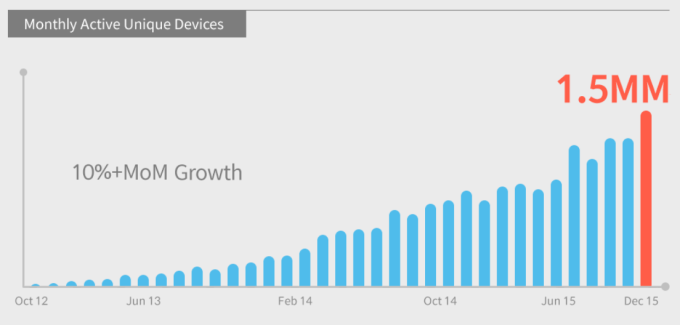Send Anywhere, a free peer-to-peer file sharing system, is getting a power boost of its own after ESTmob, the Korea-based company behind the service, landed $6 million in fresh funding.
The four-year-old company raised a $1 million seed round back in 2014 and this Series A was provided by in full by Rakuten Ventures, the VC firm and global fund associated with Japan’s top e-commerce firm. Rakuten Ventures led Send Anywhere’s seed round two years ago, which including participation from a number of angel investors.
It’s fairly rare to see a single investor front a Series A round. Many companies look to maximize their network and bring more minds onboard at this point, while, in Asia, it is even more common for investors to group together at this stage. But that’s not the case for Send Anywhere.
“We’ve considered other parties [for this round], but [adding] more investors can make it more complicated,” Estmob co-founder Suhyuk Kang told TechCrunch in an interview. “Plus, Saemin [Ahn, Rakuten Ventures managing partner] wants to focus more on growth rather than monetization.”
Indeed, to this point, Send Anywhere has not monetized its product. The service is available via a web interface, Chrome extension, WordPress plug-in and the usual array of mobile and desktop apps, including iOS, Android, Windows and Mac. A new and improved 3.0 version, including an pause/resume feature, has landed on Android, and is rolling out to other platforms from next month.
Rather than usual file-sharing, Send Anywhere takes a security conscious route by offering a 10-minute download time. Take too long and the download won’t be completed, plus the file-share itself is passcode/QR locked, meaning the sender needs to provide the recipient with a code to enable the download.

Finally, the service is peer-to-peer so it requires both parties to be online during the transfer, but there is a 24-hour ‘upload and share’ option which provides a little more flexibility. That, Kang explained, means the file isn’t stored on Send Anywhere’s server — which is interesting to note given past security concerns around NSA access to services like Dropbox. Interestingly, too, there is no cap on the size of files being transferred while you don’t need an account to get started, although getting one provides access to past history and other features.
Kang told TechCrunch that the service surpassed 1.5 million monthly active devices (both send and receive) last month, and 5 million app downloads to date across all platforms.
Photos are, perhaps unsurprisingly, the most transferred file format on the service, accounting for 43 percent of exchanges ahead of videos. Korea is the company’s largest market for usage (26 percent), followed by the U.S. (19 percent), Japan (9 percent), India (6 percent) and the U.K. (3 percent).

The Series A money will be spent on new marketing campaigns, developing the Send Anywhere technology, and growing the company’s current headcount of 16.
“We will heavily focus on hiring new engineers. We want to make our core technology stronger and will work on finding the optimal transfer path between devices,” Kang said, adding that the service is faster than competing offerings.
Kang emphasized that the company isn’t likely to begin making money from its product until it reaches a milestone like 10 million monthly users. Then, he added, it may consider monetization via advertising, although nothing is set in stone at this point.
One more subtle area where it may monetize is around its API. Samsung is the first company to be granted access to the Send Anywhere API, which is powering a new service for its printer business that allows enterprise customers to send scans to a device direct from their printer.

Like the Samsung partnership, Send Anywhere’s API could be opened to partners who then pay for usage.
I like the Send Anywhere service which, coupled by the fact that it isn’t making money yet, makes me somewhat wary that it might go the same way as similar services like Bump, which was acquired by Google in 2013 and promptly shut down months later. Particularly since the technology could have value to Rakuten (*Investor Klaxon*) and Samsung (*Partner Klaxon*), but both ESTmob and Rakuten Ventures are adamant that there is a business to be built here.
“Just a short five to seven years ago, people dreamed of cloud storage as being ubiquitous and users being able to access data and content on the fly,” Rakuten Ventures’ Ahn said in a statement.
“We’re getting there but what we realized was that latency and data quality and access costs were far bigger than expected incentives for consumers to carry around large storage capacity natively; think about it, when’s the last time you bought a 16 GB device in the U.S. or other developed markets? Your phones and tablets have become in essence the true mobile-first cloud storage mediums in their utility.”
“In this light, Send Anywhere’s user base has embraced the service’s ability to transfer data from one point to another seamlessly. In the span of 1.5 years, their customer base has grown 5x and push through more than 500 TB of data to one another.”
